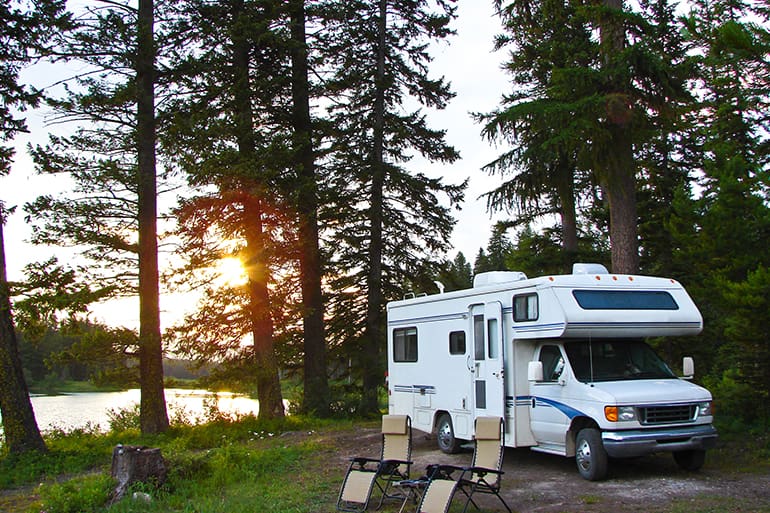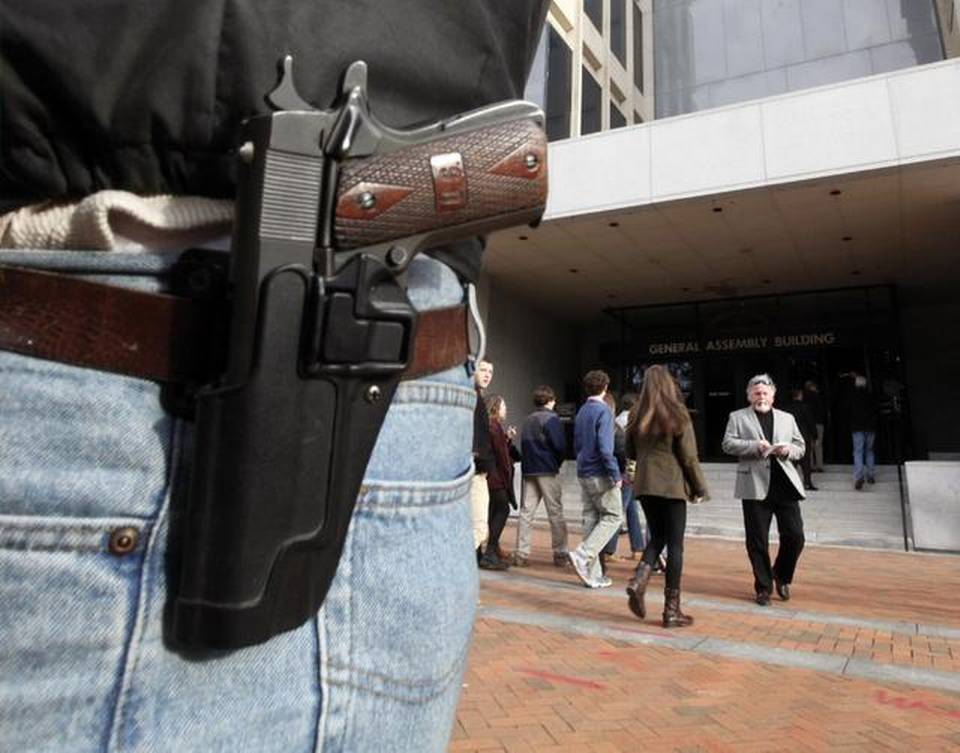There are always companies trying to sell us new ways to train. Sometimes, the new technology is helpful. Things like red/blue guns, laser trainers, VR guns and airsoft/simunition are both great for safety and great for quality of training. Sadly, there are also plenty of systems for sale that don’t pull their weight. Sometimes, they’re just too expensive. Other times, they don’t provide the benefits they promise. Occasionally, you’ll even find training aids that fail on both counts.
But, there’s one thing none of these companies, good and bad, will tell you: that some of the best training you can give yourself doesn’t cost a dime. Without an instructor, a single round of ammunition or even a gun, you can vastly improve your preparedness for emergencies and self-defense situations. The only thing it costs you is a few minutes of your time and a reasonably good imagination.
That having been said, it’s easy for the imagination to run wild. You can’t just imagine wild situations you’d never face, make yourself the hero of the story and then cheer yourself on in your own mind like Ralphie from A Christmas Story. You have to exercise a little bit of discipline for visualization and imagination to be truly useful.
Personally, I like to use news stories for this, because they provide information from the real world that you can use to put yourself in the people’s shoes. Things like a mugging, armed robbery, or a home invasion all happen in the real world, so seeing how it went for someone else gives you a great starting point.
With a realistic scenario in mind, you can next consider what you’d do to respond. Again, you have to be realistic and think about possible responses that are real instead of responses that are fun but not really possible to pull off in the real world. As you think about how you’d respond, you’ll probably start to see gaps in your preparedness. For example, if someone is going to kick your door in, would you get any good from a gun two rooms away?
Next, you can go beyond making plans for bad situations and look at ways to prevent or mitigate the situations. For example, can you beef up your front door to prevent it getting kicked in? Would you benefit from a better locking system? A camera doorbell? Other cameras? All of the opportunities for improvement require you thinking about where the weakest points are.
Another thing to do is put yourself in the bad guy’s shoes. Imagine you’re the guy attacking your house, for example. What kinds of things would ruin your day and make it less likely that you’d choose a house to rob? What things would catch your eye? Knowing all of this can be extremely helpful and help you figure out what you should do.
If you approach imagining bad situations in a systematic and productive way like this, you can get the most good from it. Given the pricing (free) and the time needed (very little), it’s a deal no gun owner carrying for self-defense, or even people who don’t carry at all, can afford to pass up!





In the motorcycle safety course I taught many many many moons ago we taught SIPDE.
Scan
Identify
Predict
Decide
Execute
This has kept me alive on my motorcycle and now I apply it as a tool for situational awareness in general. It is absolutely amazing how many people in public are completely unaware of their surroundings. Just watch people in Walmart; they are all clueless sheep who can’t see past the tip of their nose.
It’s called living inside a 1 meter box. Usually with their head down looking at their cell phone. If we could only get deer addicted to cell phones hunting season would be so much easier.
He wades through the village towards the center of town as he pulls the swinging cell phone towers down.
Oh no there goes BambiO
Go go Godzilla
more cowbell
I’m planning a trip to Chicago.
Visualizing not answering the door with a gunm in my hand.
Visualizing not selling any gunms.
Visualizing hiding in my hole until the world ends because it’s not safe out there from either the cops or the robbers.
Okay, this may run a little long and it may sound a little strange, but it does tie in with the article. I believe it also strengthens the author’s position.
So, I’m pushing a Crown Vic down the road one day, all fat, happy and stupid. My PX vibrates. It’s a friend of mine that runs high liability disciplines at the academy. (firearms, driving, defensive tactics and medical). He wants to know if I’m interested in participating in a study commissioned by the U.S. Navy. It was being done by some egg heads from FSU. Okay, this is a little out of the box and might be fun. Besides, I won’t have to work burglaries for a day or two.
I show up. There are two Kiwis and an Aussie sitting across from me. No shit. All had a PhD in something I don’t remember. I’m a white cracker Southern deputy sheriff.
They want to interview people that deal with high stress situations on regular basis to see if there is a way to integrate this into fighter pilot training to lower training costs. I’m not kidding.
I looked at those guys and said you learn to deal with stressful situations by dealing with stressful situations. Darwin takes care of the rest. They seemed taken aback. I told them. You want inexpensive training? Just tell your guys to think problems through when they don’t have anything else to worry about. If A happens I’ll do B. I’m also thinking, “you guys went to school for this?” They want to know if I can extrapolate. Okay. I tell them a recent war story. We had an attempted drug dealer rip off. Shots fired. One wounded. (That’s an interesting and funny story by itself) Anyway I tell them how I separate myself from the three other responding deputies to seal off one of the other avenues of escape. And there is the suspect vehicle. I conduct a felony stop. I deploy a Scattergun Technologies 870 being careful not to tangle the sling on the steering column, shifter, etc. They are extremely interested if I was conscious of each of these thoughts and actions as I performed them. I told them I didn’t need to. I had already thought them through and practiced them. I was on autopilot. I met with those guys a couple more times, but I had cases to work. Never heard what came out of the study.
Learning situational awareness is very important. Learn to be alert.
Preplanning your property is also a very valuable process. Like a Fire Drill plan, walk your house. Ask what would I do if…..Its amazing what you can discover in various rooms in the house.
When I answer the door I have a Ring Camera that I check. I never answer with a gun.
A month or so ago we had someone beating on the door. When my son alerted me all I saw was someone in a sweatsuit walking around the house. I went to the garage with my 1911…hit the garage door opener and was greeted by 5 of the cities “finest” in full body armor and weapons. I quickly put hands up and put the pistol on the shelf.
A crack head had hit my fence and luckily they were pretty good sorts.
But learning to expect the unexpected is very valuable. Many times the best weapon you can use to get you to a gun. Something to slow the entry (my hall closet door opens to a point where it can block the door knob partially open.)
I use a form of visualization especially when lifting weights. Not as much at 70 but earlier. Same with women. Same with making $. Shooting is the same as long as my fundamentals are good. Visualize Whirled Peas😀🙄
” Its amazing what you can discover in various rooms in your house.”
For two days I’d been smelling cat shit.
Turned out to be a can of sardines left under the bed. Not a big surprise, no cat…
I do this every week when I sit down at church. My wife likes the best tactical locations and doesn’t even know it.
I’ve run through the exercise at home too and my house is quite poor for tactics so I should probably go through that some more. Two feet away in bed (suppressed), not two rooms away.
Boy, Sensiba sure is an Expert, the way she never has to attribute her sources for her advice.
Cloudbuster, she’s actually onto something here. See my comment above. Even before that though I had a friend was a pretty good pitcher in high school. He once told me that he always drew a mental picture of how he wanted the pitch to go before he wound up. I thought about that. And began to incorporate it into my defensive techniques and shooting. When I shot a match I visualized what I was going to do as much as I could on that nice Saturday afternoon. I also visualized what I was going to do when I crashed through a door three days later at 0500 hrs. Rehearsing in the head really does work.
“Boy, Sensiba sure is an Expert, the way she never has to attribute her sources for her advice.”
So its wrong of her to give her personal opinion advice and not attribute herself?
Where is your source attribution for your own personal opinion?
That’s not just her personal opinion. It’s a distillation of other experts she has read and training she has received, but she’s not crediting those experts for their insights. Journalism 101 foul.
I agree. Using crime reports gives you an idea of what to train for. But I’ve watched Active Self Protection videos for the past 10 years now.
This is the best way to learn, from the mistakes that others make.
The unedited security video tells the truth. And if only one or maybe 2 shots are fired in self-defense. Then that 5 or 6 shot revolver, might be all you really need.
I’ve taken the Chuck Haggard “pocket rocket” class. And local classes as well.
She just gets more and more laughable.
I’m practicing Black Bart gettin’ his.